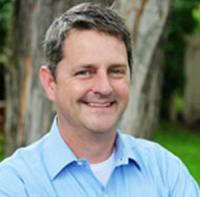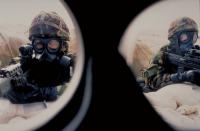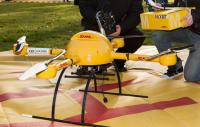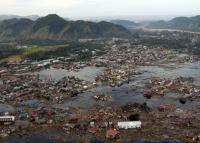-
Allocation of police resources affects economic urban welfare, inequality
Decisions about how to allocate police resources in a community are likely to influence not only crime but also housing prices, overall economic welfare, and social inequality, according to a new study by economists. The researchers develop a model for examining the behavior of socioeconomic groups in response to two possible strategies: one in which police are concentrated in certain areas and another in which they are dispersed equally across the city. The researchers conclude that equal dispersal of police will lead to a city which is economically integrated, with housing prices comparable from one neighborhood to the next. Concentrating police in certain locations will lead to unequal neighborhoods but may produce greater overall wealth.
-
-
10 years after Second Lebanon War, Israel concerned next round will be far worse
On the ten-year anniversary of the beginning of the Second Lebanon War, Israeli officials continued to warn that any future conflict with Hezbollah will result in unprecedented damage to the group. A senior IDF official said that the difference between the next war and 2006 “will be the difference between an operation and a war. 2006 was an operation, and we didn’t use all of our power. Next time it won’t just be planes flying around. … We will use all of our power to destroy Hezbollah militarily.”
-
-
Quantifying the social cost of firearms: a new approach to gun control

Another week in America, another week of sadness and hand-wringing prompted by gun violence – but the current debate focuses on the most violent actors (terrorists or those whose background check may not check out) and the most lethal guns (military-style rifles) — not necessarily the deadliest guns or those creating the greatest risks to society. A new dialogue is desperately needed among policymakers and the public. And it could begin by shifting our focus away from the regulation of guns toward understanding (and mitigating) the social costs of firearm fatalities. A potential reframing of the issue might be to estimate the social cost of gun deaths, establish the burden borne by each weapon, and seek policies that reflect it in the market for firearms. Across many different areas of government, this kind of analysis is applied all the time when examining the benefits and costs of potential policies. There may be enough Republican and Democrat lawmakers open to the idea of market-based policies that don’t directly restrict gun access, progressively impose higher costs to more dangerous guns, and generate resources to improve the safety and security associated with guns in America.
-
-
DHS S&T demonstrates integration of first responder technologies
More ruggedized protective equipment. Reliable and interoperable communications. The capability to filter vast amounts of data. These are all things DHS Science and Technology Directorate (S&T) Next Generation First Responder (NGFR) program envisions to ensure future first responder are better protected, connected, and fully aware.
-
-
Roundup of spring, summer 2016 First Responders Group technology
The DHS S&T regularly posts a roundup of key updates from projects currently in the development stages in S&T’s First Responders Group (FRG). S&T the other day offered an outline of FRG’s accomplishments in April, May, and June.
-
-
New method helps identify chemical warfare agents

Chemical warfare agents are powerful noxious chemicals that have been used as weapons of mass destruction. Finding trace amounts of a chemical warfare agent in a sample can be challenging, especially if the agent and the liquid it is in are both water-repellant, which is often the case. A new method for extracting, enriching, and identifying chemical warfare agents from oils and other organic liquids could help government officials and homeland security protect civilians more effectively from their deadly effects. The method uses nanoparticles to capture the chemicals.
-
-
NIST releases 3D ballistics research database
It is a staple of the TV-crime drama: a ballistics expert tries to match two bullets using a microscope with a split-screen display. One bullet was recovered from the victim’s body and the other was test-fired from a suspect’s gun. If the striations on the bullets line up — cue the sound of a cell door slamming shut—the bad guy is headed to jail. In the real world, identifying the firearm used in a crime is more complicated. However, the basic setup is correct. New forensic science database will provide a statistical foundation for more reliably linking bullets to the guns that fired them.
-
-
ISIS using drones with explosives, spy cameras: Pentagon

The Pentagon says that ISIS fighters are have been posing a growing threat to U.S. and Iraqi forces by using small commercial drones to carry improvised explosives devices (IEDs) or surveillance cameras. These drones are especially threatening because they can evade detection. The growing threat led the Joint Improvised-Threat Defeat Agency, the Pentagon’s office charged with keeping tab on and countering IEDs, to ask Congress for permission to reallocate $20 million to provide money for a counter-drone program.
-
-
Bahamas warns young men traveling to U.S. to “exercise extreme caution” around police
The government of the Bahamas late last week has issued a travel guidance to young Bahamian men travelling to the United States on holiday, warning them to “exercise extreme caution” when interacting with the U.S. police officers. “Do not be confrontational and cooperate” with the police, the Foreign Ministry’s travel guidance says.
-
-
Five officers killed by a sniper in Dallas (updated)
Five police officers were killed, and seven officers and two civilians injured, on Thursday by 25-year old Micha Xavier Johnson, who opened fire on the officers during a protest march in Dallas. During a 3-hour standoff with the police, Johnson said he was not associated with any group or organization, and that his only purpose was to kill White people – especially White police officers. It was the deadliest attack on law enforcement officers since the 9/11 terrorist attacks.
-
-
Impact of demographic development on fires in ecosystems as strong as that of climate change

Every year, about 350 million hectares of land are devastated by fires worldwide. This corresponds to about the size of India. To estimate the resulting damage to human health and economy, precise prognosis of the future development of fires is of crucial importance. Previous studies often considered climate change to be the most important factor. Now, a group of scientists has found that population development has the same impact at least.
-
-
Learning to live with wildfires: how communities can become “fire-adapted”
In recent years wildfire seasons in the western United States have become so intense that many of us who make our home in dry, fire-prone areas are grappling with how to live with fire. We know that fuel reduction in dry forests can mitigate the effects of wildfires. After decades of fire exclusion, dense and dry forests with heavy accumulations of fuel and understory vegetation often need to be treated with a combination of thinning and prescribed burning. Native peoples, less than 150 years ago, proactively burned the landscapes we currently inhabit – for personal safety, food production, and enhanced forage for deer and elk. In some places, people still maintain and use traditional fire knowledge. As we too learn to be more fire-adapted, we need to embrace fire not only as an ongoing problem but an essential part of the solution.
-
-
Electromagnetic fields could be used in tsunami early warning

Could electromagnetic (EM) fields be used in tsunami early warning? New research shows that important focal parameters of tsunamigenic earthquakes — particularly fault dip direction — can be extracted from tsunami-borne EM fields.
-
-
Lessons learned from the U.S.-Canada cross-border experiment
A tornado has just devastated a community on the border between the United States and Canada. Paramedics scramble to bring patients from over-crowded hospitals across the border. Communication blackouts and downed trees force ambulances to weave their way through blowing debris, fallen electrical lines, and car wrecks. The time for a routine trip from the injury site to the hospital has now tripled. While this did not really happen, it was the focus in April when the DHS S&T and several Canadian government agencies collaborated on a cross-border experiment with a focus on preparing emergency responders for this type of scenario.
-
-
Can we predict who will become mass shooters?
The Orlando nightclub attack on 12 June was among the deadliest in American history, and it was the 133rd mass shooting to take place in the United States in 2016 alone. In the aftermath of the shooting, there has been a growing discussion about introducing new laws to make it harder for mad or bad people to get their hands on guns. But what else can we do to try to bring this under control? Working on ways to perhaps recognize people who might develop into mass killers – and the reasons they have for doing so – would obviously be an important step forward.
-
More headlines
The long view
Why Was Pacific Northwest Home to So Many Serial Killers?
Ted Bundy, Gary Ridgway, George Russell, Israel Keyes, and Robert Lee Yates were serial killers who grew up in the Pacific Northwest in the shadow of smelters which spewed plumes of lead, arsenic, and cadmium into the air. As a young man, Charles Manson spent ten years at a nearby prison, where lead has seeped into the soil. The idea of a correlation between early exposure to lead and higher crime rates is not new. Fraser doesn’t explicitly support the lead-crime hypothesis, but in a nimble, haunting narrative, she argues that the connections between an unfettered pollution and violent crime warrant scrutiny.
Bookshelf: Smartphones Shape War in Hyperconnected World
The smartphone is helping to shape the conduct and representation of contemporary war. A new book argues that as an operative device, the smartphone is now “being used as a central weapon of war.”
